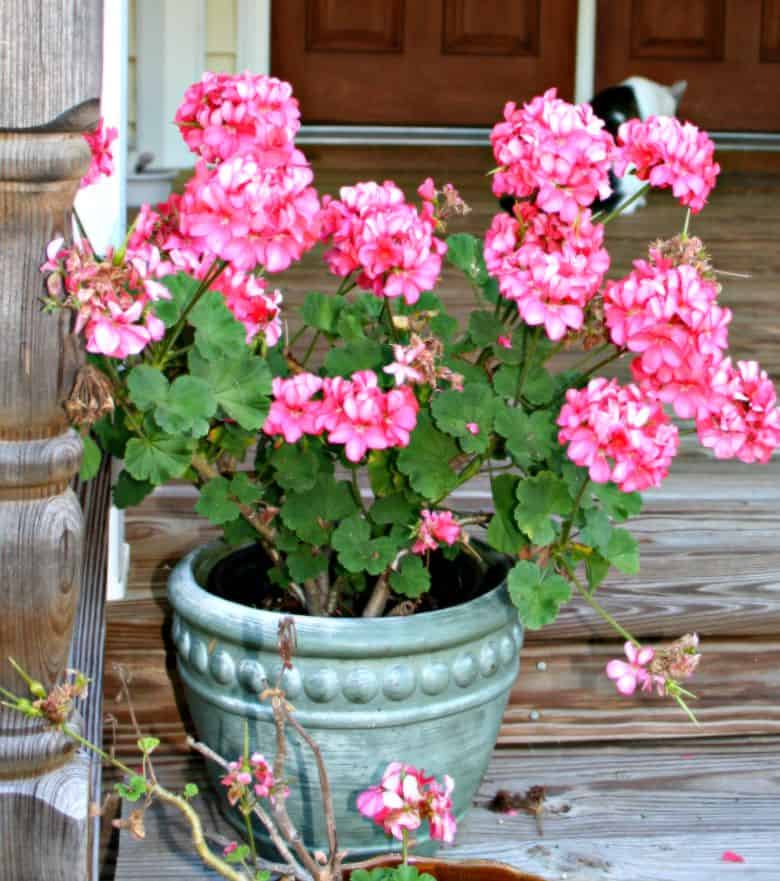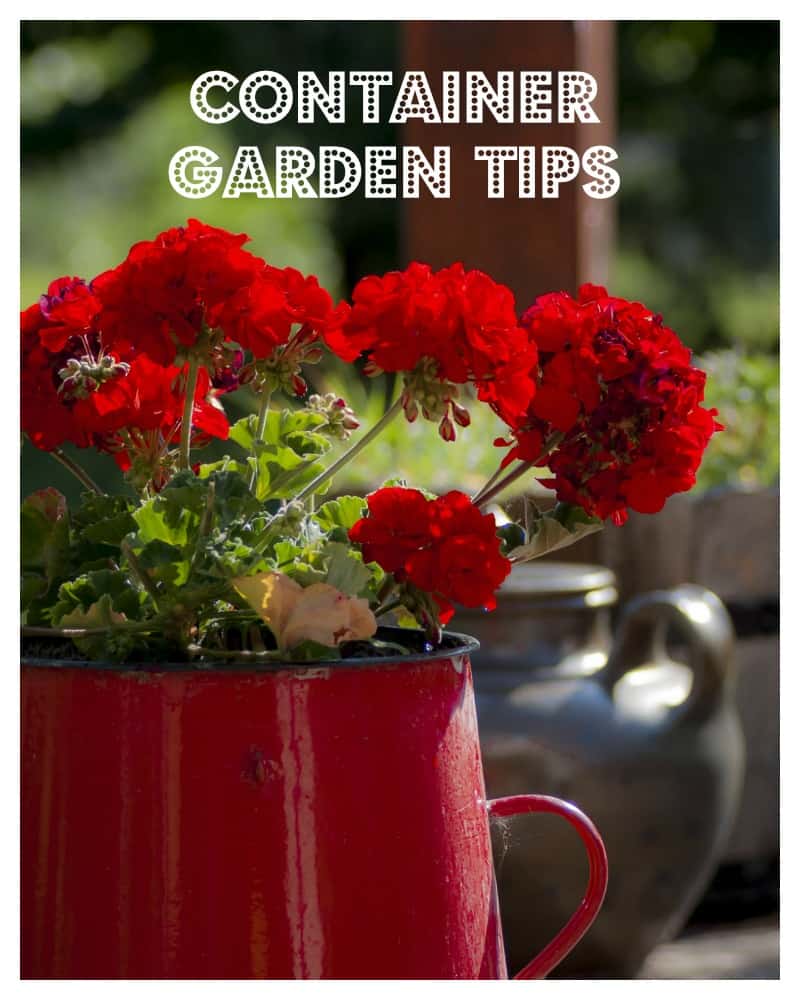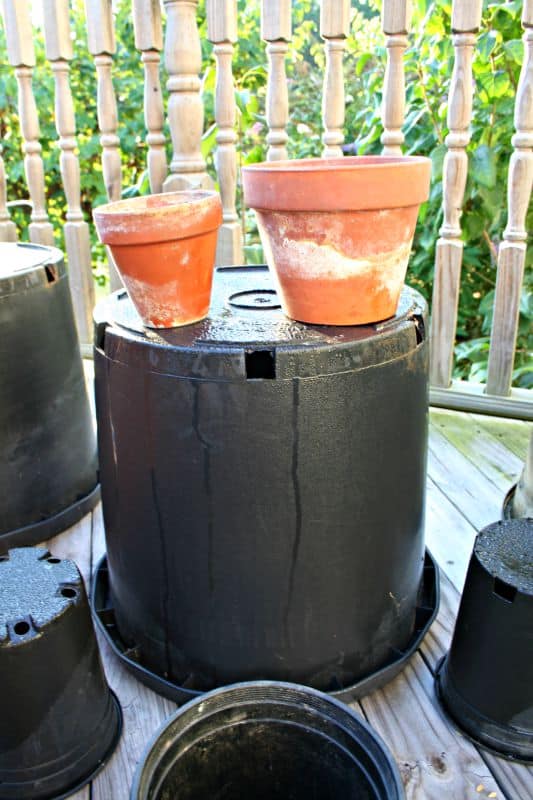Container garden tips to help your beautiful new garden thrive!
Container Garden Tips
I’ve seen a lot of really beautiful container garden ideas on Pinterest and other blogs this week. It’s the season for planting flowers, vegetables and herbs, after all, and everyone seems to want to share the joys of the season by suggesting beautiful containers.
This week alone I’ve seen suggestions for planting herbs and vegetables in:
- Old washtub
- Coffee mugs
- Mason jars
Now, don’t get me wrong. All of these ideas are clever. They use recycled materials, which I love. And the pictures the bloggers displayed were beautiful.
There’s only one problem with every single one of these clever ideas….
Not a single one of these container gardens has drainage holes!
The Importance of Good Drainage
A plant’s roots perform many functions. Roots anchor plants into the soil. They bring water and nutrients from the soil up into the plants xylem tubes, sort of like a plant’s veins. Xylem transports moisture and nutrients up into the cells throughout the plant.
Around a plant’s roots are tiny micro hairs that attract specific fungi and microorganisms. These form little colonies around the roots, helping the plant break down soil matter into nutrients. Soil is a living organism filled with all sorts of fascinating critters. I guarantee you, spend a day with me in the garden and you’ll never refer to it as ‘dirt’ anymore!
Anyway…back to the roots. Roots need soil. Unless a plan is an aquatic plant, roots cannot stay in standing water. A mature, healthy plant needs soil around its roots in order to breathe. If the roots are destroyed, the plant is destroyed.
Drainage holes in the bottom of your containers make sure that the plant doesn’t stay in standing water for too long. Water drips slowly out from the bottom of the pot if there is a drainage hole. Gravity draws it down.
Now on to those clever mug gardens, Mason jar gardens and so on…they lack drainage holes, especially glass canning jars and coffee mugs. If you follow the instructions found on these Pinterest tips or blog posts, you’ll end up with a dead plant, especially if you tend to water too much.
The following container garden tips can help you use these beautiful and clever ideas without killing your plants:
- Find a plastic pot with drainage holes that slips into the container of your choice.
- Fill the plastic container with soil. Rocks or pebbles aren’t necessary.
- Plant your herb or small vegetable plant inside the pot.
- Slip the entire pot inside the outer pretty container.
- When you water your plants, if you overdo it and there’s standing water in the bottom of the container, gently pull out the plastic pot and the plant, tip the water into the sink, and replace your plant and pot.

The geranium is planted inside a plastic container with drainage holes. I lift it out, tip the pretty exterior pot to pour out the extra water, and replace the geranium.
If you use this method, you’ll be able to keep your plant healthy. You’ll prevent it from getting water-logged. It will live longer and thrive inside your pretty little containers.
Container gardening tips aren’t just about beauty. Sure, we all want a pretty window sill garden or container garden. But if the plants aren’t healthy, they sure won’t be pretty. Go for healthy plants first, beauty second, and you won’t go wrong.
Happy gardening! Keep growing!








I am new at gardening and didn’t realize the importance of good drainage. I have recently gotten into gardening and have killed so many plants but I am motivated to have a pretty garden this summer. Thank you for your information about good containers to use when gardening and to make sure they have drainage holes. I will keep this in mind when I am planting more plants. Thanks for all the great information!